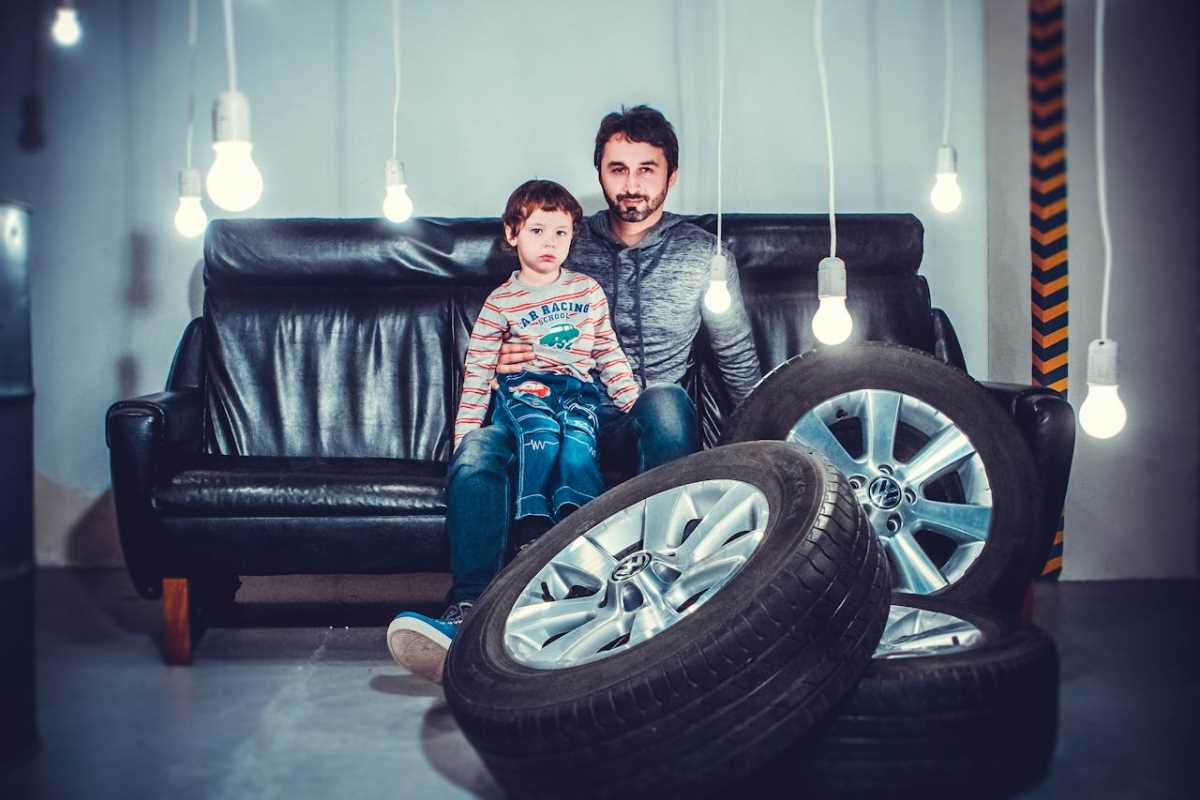Seeing a headlight go out can feel like a major inconvenience, often bringing thoughts of costly trips to the mechanic. You might picture a complicated repair that’s best left to the professionals. The good news is that changing a headlight bulb is a task that most car owners can handle themselves. With a little guidance and the right tools, you can complete this job with confidence and save money. This guide is here to empower you. We will walk you through identifying the correct bulb, accessing the headlight assembly, and replacing the old bulb safely. You've got this, and we'll show you how to get back on the road with bright, clear visibility in no time.
Why You Should Learn to Change Your Own Headlight Bulbs
Learning a new skill, especially one related to your car, can be incredibly empowering. Changing your own headlight bulbs is a perfect entry point into basic vehicle maintenance. It’s a simple job that offers several immediate benefits.
First, you save money. A mechanic will charge for labor in addition to the cost of the bulb itself. This labor fee can often be more than the price of the part. By doing it yourself, you only pay for the replacement bulb, turning a potentially expensive service into a small, manageable purchase.
Second, you save time. You don’t need to schedule an appointment, drive to a shop, or wait for your car to be serviced. A typical headlight bulb replacement can be done in your own driveway in under an hour, getting you back on the road quickly and on your own schedule.
Finally, driving with a burnt-out headlight is a safety hazard. It significantly reduces your visibility at night and makes it harder for other drivers to see you. It can also lead to a traffic ticket. Knowing how to change a bulb yourself means you can address the problem immediately, keeping you and others safe.
Tools and Materials You'll Need
Before you begin, gathering the right tools and materials will make the process smooth and frustration-free. Most headlight bulb changes require only basic hand tools. You likely have many of them already.
Here is a checklist of what you should have ready:
- Your Vehicle’s Owner's Manual: This is your most valuable tool. It will tell you the exact type of bulb you need and often provides specific instructions for your make and model.
- The Correct Replacement Bulb(s): Always check your owner’s manual for the specific bulb part number. You can also use an online bulb finder tool on an auto parts store website. It’s a good practice to replace both headlight bulbs at the same time, as they tend to fail around the same time.
- Screwdrivers or a Socket Set: The tools needed will depend on your vehicle. Some cars require a Phillips head screwdriver, a flathead screwdriver, or a set of metric sockets to remove screws or bolts holding the headlight assembly in place.
- Gloves (Latex or Nitrile): This is crucial. The oils from your skin can create hot spots on a new halogen bulb, causing it to burn out prematurely. Always wear clean gloves when handling the new bulb.
- A Clean, Lint-Free Cloth: Use this to wipe down the new bulb if you accidentally touch it.
- Safety Glasses: It's always a good idea to protect your eyes when working on your vehicle.
A Step-by-Step Guide to Changing Your Headlight Bulb
With your tools gathered, you’re ready to get started. The process can be broken down into a few simple steps. While the exact procedure varies by vehicle, this general guide covers the most common method. Always refer to your owner's manual for model-specific details.
Step 1: Identify and Purchase the Correct Bulb
Your first task is to figure out what kind of bulb your car needs. Open your owner's manual and look in the index for "headlights" or "bulbs." It will provide a part number, such as "H11" or "9006." Once you have this number, you can purchase the replacement bulb at any auto parts store or online.
Remember, headlights come in pairs. If one has burned out, the other is likely not far behind. Replacing both at once ensures even brightness and saves you from repeating the job in a few weeks or months.
Step 2: Prepare Your Vehicle
Park your car on a level surface and turn off the engine. Make sure your headlights are switched off. For safety, it’s a good practice to engage the parking brake. Open the hood and secure it with the prop rod. This gives you access to the back of the headlight assembly.
Step 3: Access the Back of the Headlight Assembly
Locate the back of the headlight that has the burnt-out bulb. In many modern vehicles, the engine bay is crowded. You may need to remove a plastic cover or even move the battery or air filter box to get clear access. Your owner's manual will provide a diagram showing how to do this.
In some cars, accessing the bulb is much simpler, with a clear path directly to the bulb holder. For other vehicles, particularly certain trucks or SUVs, you might need to access the bulb through the wheel well. This may require turning the steering wheel or removing a few clips to pull back the plastic liner.
Step 4: Disconnect the Power Connector
Once you can see the back of the bulb, your next step is to disconnect the electrical wiring harness. This is a plastic plug attached to the base of the bulb. It usually has a small tab that you need to press or lift to release the lock. Gently but firmly pull the connector straight off the bulb. Don't yank on the wires themselves.
Step 5: Remove the Old Bulb
Now it’s time to take out the old bulb. There are a few common ways bulbs are secured:
- A Plastic Retaining Ring: Many bulbs are held in by a large plastic ring that you twist to unlock, usually about a quarter-turn counterclockwise. Once unlocked, the bulb can be pulled straight out.
- A Wire Clip: Some bulbs are held in place by a spring-like wire clip. You'll need to push the clip in and to the side to release the tension. The clip will then swing out of the way, allowing you to remove the bulb.
- Screws: Less commonly, the bulb might be secured with small screws. You'll need the appropriate screwdriver to remove them.
Carefully remove the old bulb and set it aside for proper disposal.
Step 6: Install the New Bulb
Put on your clean gloves. Take the new bulb out of its packaging, being very careful not to touch the glass with your bare hands. If you do touch it, wipe it gently with a clean, lint-free cloth and a small amount of rubbing alcohol.
Carefully insert the new bulb into the headlight housing. It is often keyed, meaning it will only fit in one orientation. Do not force it. Gently rotate the bulb until it slides into place. Once it's seated properly, secure it using the same method you used to remove the old one (twist the retaining ring, latch the wire clip, or replace the screws).
Step 7: Reconnect and Test
With the new bulb securely in place, plug the electrical connector back onto the base of the bulb. You should hear or feel it click into place.
Before you put everything back together, it's essential to test the new bulb. Turn on your headlights and check that both the low beams and high beams are working correctly. This quick check saves you the frustration of having to take everything apart again if there’s an issue.
Step 8: Reassemble Everything
If the new bulb works, you can now reassemble any components you removed to access it. Put back any plastic covers, re-secure the air filter box or battery, and fasten any clips in the wheel well. Close the hood, and you're done!
 (Image via
(Image via





